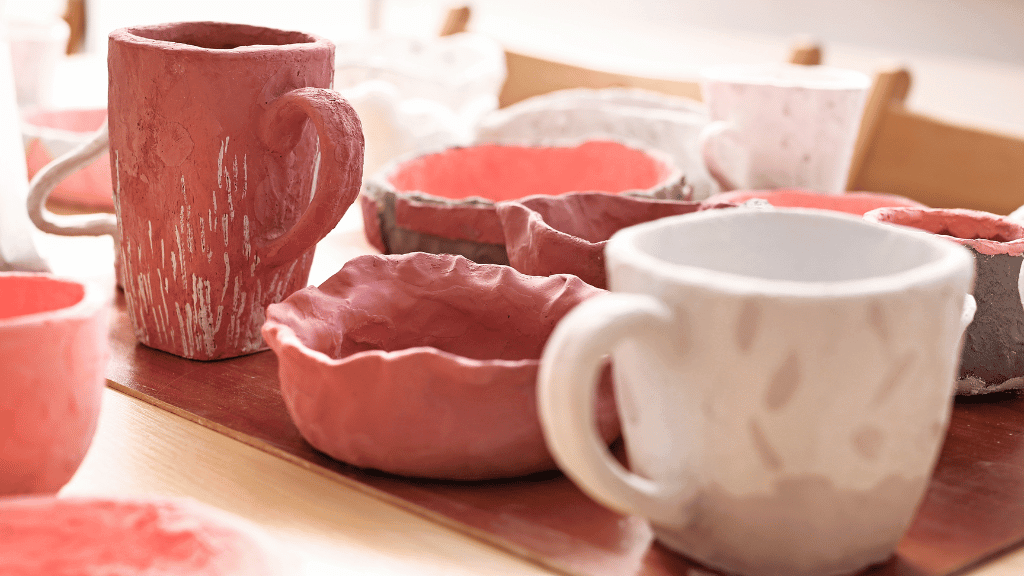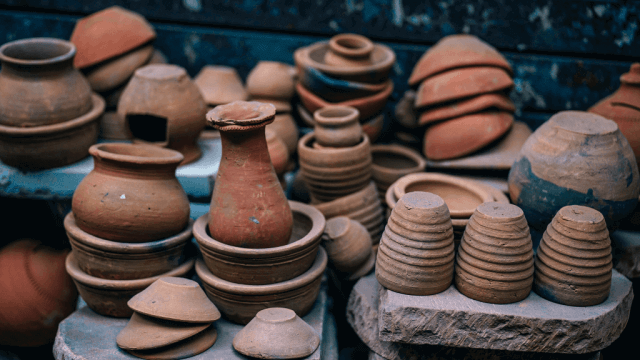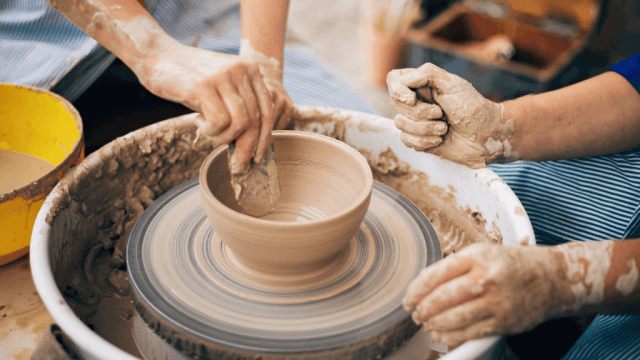Price your pottery work by considering factors like materials, labor, overhead costs, level of expertise, and market value.
Research comparable items, and establish a profit margin that fairly compensates your time, skill, and creativity without overpricing.
Calculating Pottery Costs
Understanding pottery costs involves considering various factors that influence the final pricing.
Let’s break down the key components.
Materials and Supplies
Factor in the cost of clay, glazes, and any additional materials used in your pottery work.
Calculate these expenses on a per-piece basis to determine the actual material cost for each item you create.
Labor
Determine the time taken to create each piece, including preparing clay, shaping, drying, firing, and glazing.
Assign yourself an hourly wage and multiply it by the hours spent on each piece to determine the labor cost.
Overhead Costs
Include expenses like studio rent, equipment maintenance, utilities, and insurance in your pricing.
Divide your monthly overhead costs by the number of pieces you create per month to find the overhead cost per piece.
Setting Competitive Prices
Analyze the market for similar pottery pieces and take note of the prices.
Check local art fairs, galleries, and online marketplaces to find comparable products and their price ranges.
Expertise and Uniqueness
Factor in your level of experience, skill, and the uniqueness of your pottery work.
Higher expertise and one-of-a-kind pieces can justify higher prices.
Target Market
Understand your target audience and their preferences.
Cater your pricing to the specific market in which you intend to sell your pottery work.
Establishing a Profit Margin
Add up your material, labor, and overhead costs per piece.
Then, apply a profit margin that fairly compensates you for your time and skills without overpricing.
Wholesale vs Retail
Consider whether you’ll be selling wholesale or retail.
Wholesale prices should be lower to accommodate retailers’ need for a profit margin, while retail prices can be higher.
Testing and Adjusting
Monitor your pottery sales and the market.
If pieces sell quickly, you may be underpricing.
If they don’t sell, consider lowering the price or re-evaluating your marketing strategy.
Adjust and fine-tune your pricing strategy based on sales performance and market feedback.
Maintaining Consistent Pricing
Establish a consistent pricing system for your pottery work to ensure fairness and credibility.
Avoid underpricing or overpricing pieces arbitrarily, as this can confuse or alienate potential customers.
A structured pricing approach will also help you better track your pottery costs and profits.
Customer Perception and Presentation
Keep in mind that customers are also paying for the story and experience that come with your pottery work.
Help customers understand the value of your art by showcasing your expertise, creative process, and the benefits of owning your unique pottery pieces.
Present your work professionally, both online and in person, with quality photography, accurate descriptions, and polished packaging to enhance the perceived value of your products.
Factoring in Shipping Costs
Shipping pottery can be expensive since it’s fragile and often requires special packaging.
Decide if you’ll incorporate these costs into your pottery prices or charge shipping separately.
Research different shipping carriers and find the most cost-effective option that ensures the safe and timely delivery of your pieces.
Considering Discounts and Sales
Plan and account for occasional discounts and sales that you may offer to your customers.
This can include seasonal promotions, multi-item discounts, or exclusive offers to collectors and loyal supporters.
Ensure that your profit margin covers the discounted sales without sacrificing your income or undermining the perceived value of your pottery work.
FAQ Section
Here are some frequently asked questions and their answers, addressing the pricing of pottery work and related aspects.
How do I calculate the cost of materials per piece?
Divide the total cost of materials used by the number of pieces made using those materials.
This will give you an average material cost per pottery piece.
How can I determine an hourly wage for my labor?
Identify an hourly wage that reflects your skill, experience, and local market conditions.
Research what similar artisans charge and establish a rate that compensates you fairly.
What if my overhead costs fluctuate monthly?
Calculate your average monthly overhead costs based on a period of time, such as three to six months.
Use this average to determine the overhead cost per pottery piece.
How do I adjust the price of my pottery work if the market changes?
Regularly research and compare your prices to similar products in the market.
If there’s a significant shift in the market, adjust your prices accordingly while still maintaining profitability and fair compensation for your efforts.
Should I offer free shipping for my pottery work?
Free shipping can attract more customers but may affect your profit margin.
Determine if you can include the shipping costs in your prices without overpricing or significantly reducing your profits.
Alternatively, consider offering free shipping as a seasonal promotion or when customers meet a purchase threshold.











